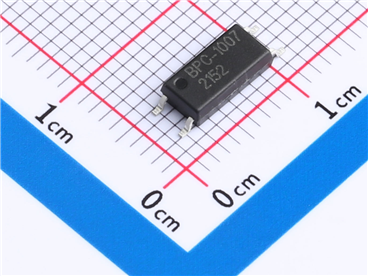Service hotline
+86 0755-83044319
release time:2024-03-13Author source:SlkorBrowse:9111
From IDM to vertical division of labor, the specialization in the semiconductor industry has led to the emergence of independent testing companies. The integrated circuit industry began to rise gradually from the 1960s. In the early days, companies operated under the IDM model (vertical integration), which covered the entire chip production process including design, manufacturing, and testing. These companies typically had characteristics of large scale, comprehensive technology, and profound accumulation, such as Intel and Samsung. As the cost of technological upgrades increased and the demand for production efficiency in the IC industry rose, the industry gradually shifted towards a vertical division of labor model.
In 1987, TSMC was founded, separating IC manufacturing from the IC industry and gradually developing into an industry chain model with separate design, manufacturing, packaging, and testing. This vertical division of labor model significantly improved the overall operational efficiency of the industry. Furthermore, separating the relatively light asset design from the heavy asset manufacturing and testing is conducive to concentrated research and development investment in each link, accelerating technological development, lowering the barriers to entry and operating costs for enterprises. Moreover, entrusting different stages to different manufacturers enhances the professionalism of enterprises and the accuracy of the production process. Additionally, separating professional testing from packaging and testing can reduce redundant production capacity investment, provide stable specialized testing services for small and medium-sized design companies, reduce testing costs through economies of scale, and cut industry costs.
Integrated circuit testing is a crucial node in the industry chain, spanning the entire process from design and manufacturing to packaging and application. From the perspective of the entire manufacturing process, integrated circuit testing specifically includes design verification in the design phase, process technology testing in the wafer manufacturing phase, wafer testing before packaging, and final product testing after packaging. It plays an important role throughout the entire process of design, manufacturing, packaging, and application in ensuring chip performance and enhancing the efficiency of the industry chain.
Design validation, also known as laboratory testing or characterization testing, is the process of verifying the correctness of the design before the chip enters mass production. It involves functional testing and physical verification.
Process technology testing, carried out during wafer manufacturing, involves detecting defects, film thickness, line width, critical dimensions, and other parameters in the wafer production process. This testing is considered a front-end test.
Wafer testing (Chip Probing), also known as middle testing, involves testing the wafers after they have been fabricated by a foundry. The purpose is to identify and remove defective dies before dicing and packaging, reducing packaging and final chip testing costs. It also helps in determining the yield of good die on the wafer, the exact location of defective die, and various pass rates, providing direct feedback on wafer manufacturing yield and capability.
Final chip testing (Final Test), the last step in the integrated circuit production process after dicing, bonding, packaging, and aging, involves comprehensive testing of the circuit's performance. As some circuits may get damaged during packaging and aging processes, this testing aims to select qualified products, grade them based on device performance parameters, and record the distribution of devices at each level and various parameter statistics. Based on this data and information, the quality management department supervises product quality, while the production management department controls circuit production.
IC testing is a crucial element in ensuring product yield and cost control, playing a vital role throughout the integrated circuit production process. The primary objective of IC testing is to ensure that chips can fully meet the functional and performance specifications as defined in the design specification under harsh environmental conditions. Each test generates a series of test data, as the test program typically consists of multiple test items that thoroughly examine the chip from various aspects. This not only determines whether the chip's performance meets the standards and is market-ready but also provides detailed, quantitative insights into various indicators ranging from the chip's structure, functionality, to electrical characteristics. Therefore, conducting IC testing effectively enhances chip yield and production efficiency.









Site Map | 萨科微 | 金航标 | Slkor | Kinghelm
RU | FR | DE | IT | ES | PT | JA | KO | AR | TR | TH | MS | VI | MG | FA | ZH-TW | HR | BG | SD| GD | SN | SM | PS | LB | KY | KU | HAW | CO | AM | UZ | TG | SU | ST | ML | KK | NY | ZU | YO | TE | TA | SO| PA| NE | MN | MI | LA | LO | KM | KN
| JW | IG | HMN | HA | EO | CEB | BS | BN | UR | HT | KA | EU | AZ | HY | YI |MK | IS | BE | CY | GA | SW | SV | AF | FA | TR | TH | MT | HU | GL | ET | NL | DA | CS | FI | EL | HI | NO | PL | RO | CA | TL | IW | LV | ID | LT | SR | SQ | SL | UK
Copyright ©2015-2025 Shenzhen Slkor Micro Semicon Co., Ltd